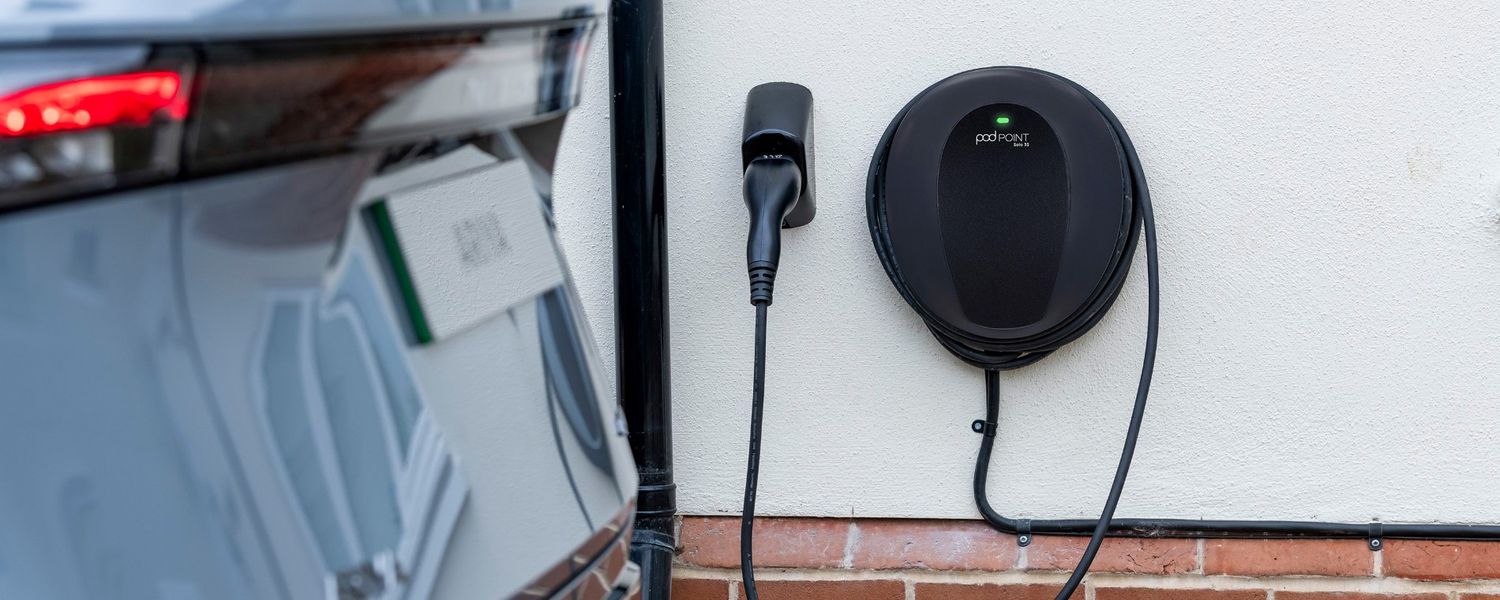
Home EV Charger Installation Requirements for UK Residents
Home EV Charger Installation Requirements for UK Residents
Between 2021 and 2025, the number of EVs on UK roads increased by 272.99%. And naturally, as more drivers make this switch to electric, the demand for home charging has skyrocketed.
However, it isn’t as simple as installing a ‘typical’ household appliance. There are strict EV charger installation requirements that UK residents must follow.
Property and Permissions
To install a home charger, you need property ownership or written consent from the landlord or freeholder.
If you have access to off-street parking, for example, a driveway or garage, EV charger installation generally falls under permitted development rights. This means you don’t need to apply for planning permission.
When only on-street parking is available, the situation is a little more difficult. You’ll need to get permission from your local council and invest in a cross-pavement charging solution (like a cable channel).
For those living in flats with a shared car park or designated parking bays, you’ll need permission from the freeholder or property management company.

Power Supply
Most home EV chargers use a 7 kW charger. As a result, it’ll require a dedicated circuit as well as an assessment of your property’s existing electrical capacity.
When it comes to the installation of a power supply, professional installation is required under Part P of Building Regulations.
During installation, they’ll:
Check the main fuse size (usually 30 or 60 amp)
See if the electrical supply is looped (shared with other properties)
Notify or gain approval from the Distribution Network Operator (DNO).
If the capacity is poor or a looped supply is present, the DNO may need to come in and perform some upgrades. This generally includes fuse replacement or unlooping.
There are more powerful EV chargers available, like 11 kW or 22 kW. However, these require a three-phase electricity supply. Generally, these are pretty uncommon in UK homes, so it can cost thousands and take months to install.
Network Connectivity
Under a recent EV charging regulation in the UK, “Electric Vehicles (Smart Charge Points) Regulation”, all chargers must have smart functionality. This means it should have the ability to connect to the internet via Wi-Fi, Ethernet, or a mobile network (like 4G).
Charger Location
When it comes to the actual location of the charger, legal requirements state:
- The unit must not be installed within 2 meters of a public highway (road, pavement, footpath) or facing the street.
- The unit must be mounted at a height of between 0.75 and 1.2 metres above ground level.
- The unit must be positioned at least 2.5 metres away from a metallic object on a separate earth.
Most of the time, the best location is near the consumer unit. This reduces cabling requirements and installation costs.
Plus, it should be easily accessible for the parked car, reducing trailing cables, and installed on solid structures, not temporary ones.
Electrical Safety
Another EV charger installation requirement for UK homes is that it must be installed by a qualified electrician, ideally one who’s OZEV-approved.
This is because the installer will need to comply with the latest electrical safety codes. These include:
- BS 7671:2018 (18th Edition Wiring Regulations)
- BS EN 61851-1:2019 product standards
- Part P of the Building Regulations
- PAS 1899 recommendations where accessibility is relevant

Smart Charging
By default, all installed EV chargers are required to be “smart”. This means it should include automatic off-peak scheduling, built-in delay mechanisms, internet connectivity, several cybersecurity features, tamper detection, and the ability to update firmware remotely.
EV Charger Installation Checklist
To ensure you follow all the necessary EV charger installation requirements for a UK home, ask yourself the following:
- Do you own the property or have landlord approval?
- Do you have on-street or off-street parking?
- Has a professional checked your fuse size and supply type?
- Has the DNO been notified or approved the installation?
- Do you need a 3-phase upgrade for higher power?
- Is there a reliable Wi-Fi, Ethernet, or 4G connection at the installed location?
- Is the charger at least 2m from a highway and 2.5m from metal objects?
- Is the charger mounted 0.75 to 1.2 meters above ground level?
- Is your installer a certified electrician, even better, OZEV-approved?
- Do you have a charger that is smart, secure, and regulation-compliant?
Current EV Charger Installation Grants

Summary
As you can see, the requirements for EV charger installation aren’t as straightforward as you might think. It requires that you follow several regulations, ensuring safety, accessibility, and more. Because of this, you should choose a professional EV charger supplier and installer.